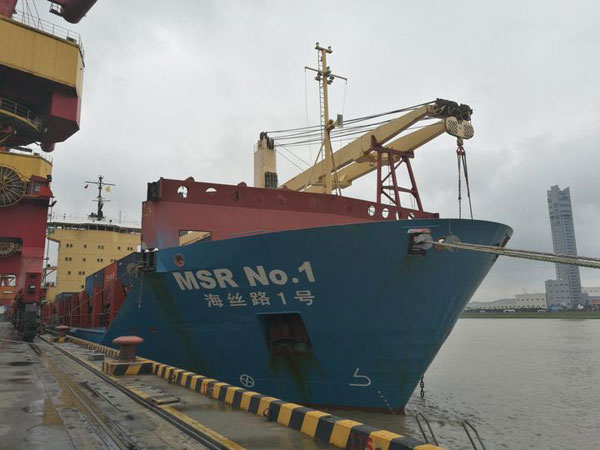Cross-border transport of internally traded goods flourishes in Ningbo port

MSR No 1, a cargo ship carrying nearly 2,700 metric tons of copper plate worth 135 million yuan ($19.67 million), arrives at Zhenhai Port Area in Ningbo in Zhejiang province on June 20. [Photo/zj.zjol.com]
A shipping route connecting Huichun city in Jilin province to Zarubino Port in Russia and Zhenhai Port Area in Ningbo in Zhejiang province, has facilitated China's cross-border transportation of internally traded goods since it was launched nearly a year ago.
Statistics from Ningbo Customs showed that 10,200 metric tons of bulk commodities worth 280 million yuan ($40.73 million) were handled by Zhenhai Port Area over the past year.
The Ningbo-Zhoushan Port Group, Jilin Northeast Asia Railway Group and a Russian seaport group signed an agreement last September to start the route.
Officials said the route is an important part of the Belt and Road cooperation that may broaden the transportation channels for bulk commodities from Northeast China and Inner Mongolia to South China and supports cargo transport between China and Russia.
They added that the route cuts nearly 800 kilometers off existing internal transportation routes featuring land-sea combined transportation, and shortens the time by two to four days, thus saving logistics costs of 20 yuan per ton.
Huichun is a window for China to Northeast Asia. It boasts four national railway and highway ports, which are only 71 kilometers away from Russia's Zarubino Port.
As China has been opening its northeast area up and Russia has been doing the same for its far east region in recent years, Huichun has established many shipping routes for the cross-border transportation of internally traded goods.
The city's cooperation with Ningbo-Zhoushan Port started in 2011 when the two joined in establishing a shipping route connecting itself, the Democratic People's Republic of Korea and Ningbo.



 Print
Print Mail
Mail
